Related Research Articles

The New York Central Railroad was a railroad primarily operating in the Great Lakes and Mid-Atlantic regions of the United States. The railroad primarily connected greater New York and Boston in the east with Chicago and St. Louis in the Midwest, along with the intermediate cities of Albany, Buffalo, Cleveland, Cincinnati, Detroit, Rochester and Syracuse. New York Central was headquartered in New York City's New York Central Building, adjacent to its largest station, Grand Central Terminal.

U.S. Bancorp is an American bank holding company based in Minneapolis, Minnesota, and incorporated in Delaware. It is the parent company of U.S. Bank National Association, and is the fifth largest banking institution in the United States. The company provides banking, investment, mortgage, trust, and payment services products to individuals, businesses, governmental entities, and other financial institutions. As of 2019, it had 3,106 branches and 4,842 automated teller machines, primarily in the Western and Midwestern United States. In 2023 it ranked 149th on the Fortune 500, and it is considered a systemically important bank by the Financial Stability Board. The company also owns Elavon, a processor of credit card transactions for merchants, and Elan Financial Services, a credit card issuer that issues credit card products on behalf of small credit unions and banks across the U.S.
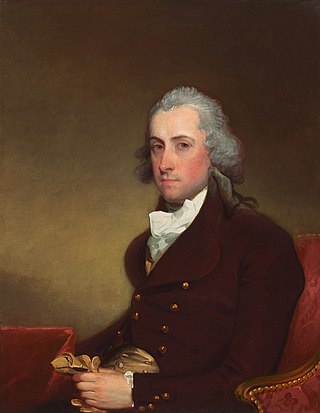
Stephen Van Rensselaer III was an American landowner, businessman, militia officer, and politician. A graduate of Harvard College, at age 21, Van Rensselaer took control of Rensselaerswyck, his family's manor. He developed the land by encouraging tenants to settle it and granting them perpetual leases at moderate rates, which enabled the tenants to use more of their capital to make their farms and businesses productive.

The National Bank of Detroit (NBD), later renamed NBD Bank, was a bank that operated mostly in the Midwestern United States. Following its merger with First National Bank of Chicago, the bank was ultimately acquired and merged into Bank One, at which point the NBD name was discontinued. Today, what was once NBD is owned by JPMorgan Chase & Co.

KeyBank, the primary subsidiary of KeyCorp, is an American regional bank headquartered in Cleveland, Ohio. Key ranked 449th on the 2022 Fortune 500 list based on its 2021 revenue. It is 25th on the list of largest banks in the United States.
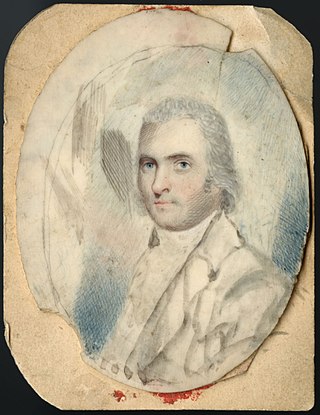
Ezra Ames was a popular portrait painter in Albany, New York, during the late 18th and early 19th centuries. More than 700 portraits have been attributed to him.
Valley National Bancorp, doing business as Valley Bank, is a regional bank holding company headquartered in Morristown, New Jersey, with approximately $64 billion in assets. Its principal subsidiary, Valley National Bank, currently operates over 230 branch locations and commercial banking offices across New Jersey, New York, Florida, Alabama, California, and Illinois. Valley Bank is one of the largest commercial banks headquartered in New Jersey.
The Bank of Baltimore was a bank based in Baltimore, Maryland, that was chartered in 1795 and failed during the Panic of 1857. It was the seventh American bank to begin business in the United States and the second bank in Maryland.
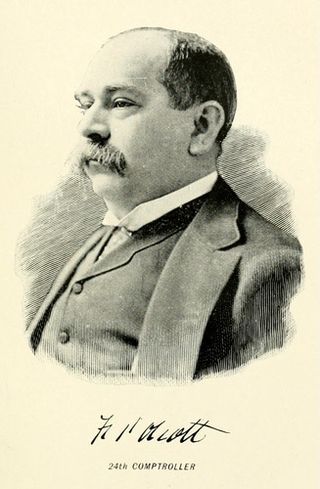
Frederic Pepoon Olcott was an American banker and politician.
Benjamin Knower was an American merchant, banker and politician.
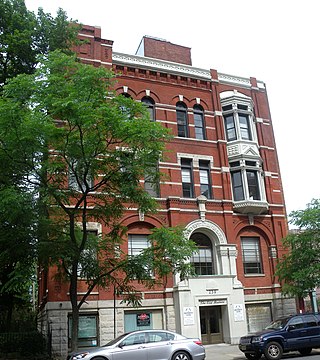
Provident Financial Services, Inc. is the holding company for Provident Bank. Established in 1839, Provident Bank emphasizes personal service and customer convenience in attending to the financial needs of businesses, individuals and families in New Jersey, New York, and eastern Pennsylvania. The bank offers a broad array of deposit, loan, and investment products as well as trust, fiduciary and wealth management services through its wholly owned subsidiary, Beacon Trust Company.
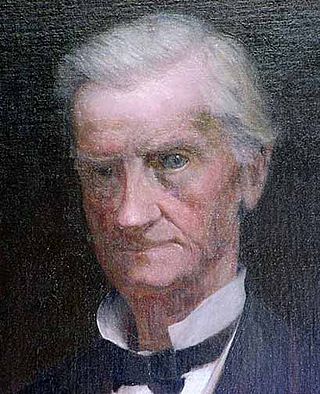
Hon. George William Clinton was a New York lawyer, politician, judge, author, and amateur naturalist. He served as mayor of Buffalo, New York from 1842 to 1843.
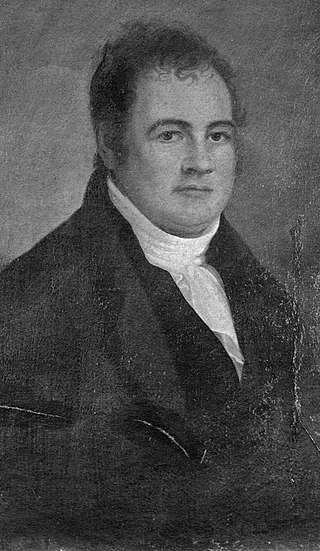
Solomon Southwick was an American newspaper publisher and political figure who was a principal organizer of the Anti-Masonic Party.

William Caryl Ely was an American lawyer and politician from New York.
Howard N. Allen was an American farmer, banker, and politician from New York.
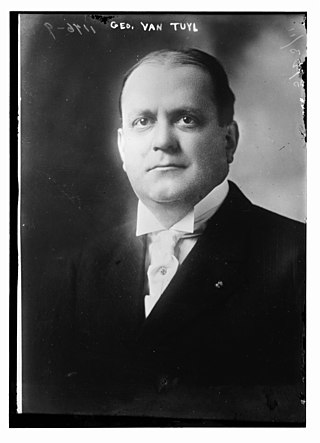
George Casey Van Tuyl, Jr. was an American banker from New York.

The Farmers' Loan and Trust Company was a national bank headquartered in New York City that later became Citibank.
Thomas Worth Olcott was an American banker who served as president of the Mechanics' and Farmers' Bank of Albany, an institution he was connected with for 69 years.
The Metropolitan Trust Company of the City of New York was a trust company located in New York City that was founded in 1881. The trust company merged with the Chatham and Phenix National Bank in 1925 under the name of the Chatham Phenix National Bank and Trust Company of New York.
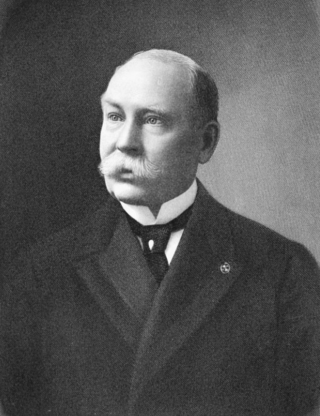
Dudley Olcott was an American banker who served as President of the Mechanics' and Farmers' Bank of Albany.
References
- Notes
- ↑ The first directors named in the act were: Benjamin Knower, John Bryan, Elisha Dorr, Solomon Southwick, Spencer Stafford, Isaac Denniston, Benjamin van Benthuysen, William Fowler, George Merchant, Thomas Lennington, Giles W. Porter, Willard Walker, and Walter Weed. [1]
- Sources
- 1 2 "A downtown corner in context". alloveralbany.com. All Over Albany. July 23, 2018. Retrieved 21 October 2021.
- 1 2 Howell, George Rogers (1 January 1886). Bi-centennial history of Albany. History of the county of Albany, N. Y., from 1609 to 1886. With portraits, biographies and illustrations. [By] Howell [and] Tenney. Assisted by local writers. Dalcassian Publishing Company. pp. 529–530. Retrieved 21 October 2021.
- 1 2 Reynolds, Cuyler (1911). Hudson-Mohawk Genealogical and Family Memoirs, Vol. I. New York: Lewis Historical Publishing Company. pp. 133–137. Retrieved 21 October 2021.
- ↑ "Reorganization of the Mechanics' and Farmers' Bank of Albany". The New York Times . 8 August 1868. Retrieved 21 October 2021.
- 1 2 "The story of that beautiful, odd, skinny building on State Street in Albany". All Over Albany. January 22, 2016. Retrieved 21 October 2021.
- ↑ Mechanics and Farmers Bank from Albany (NY) Daily Photo.
- ↑ "A VETERAN BANKER DEAD". The New York Times . 24 March 1880. Retrieved 20 October 2021.
- 1 2 TIMES, Special to THE NEW YORK (11 May 1947). "ROBERT OLCOTT, 82, BANK OFFICIAL, DIES; Board Chairman of Mechanics, Farmers in Albany Headed Institution for 26 Years". The New York Times . Retrieved 21 October 2021.
- ↑ "BANK IN FEDERAL RESERVE; Mechanics and Farmers of Albany Admitted to Membership". The New York Times . 1 July 1943. Retrieved 21 October 2021.
- ↑ TIMES, Special to THE NEW YORK (31 January 1952). "BANK DOUBLES CAPITAL; Mechanics and Farmers Votes 100% Dividend, 10-for-1 Split". The New York Times . Retrieved 21 October 2021.
- 1 2 Heinemann, H. Erich (1 February 1968). "MORE BANKS JOIN HOLDING VENTURE; Bank of New York-County Trust Plan Adds 2 Units". The New York Times . Retrieved 21 October 2021.
- ↑ "Bank of New York Company And Tanners National Bank". The New York Times . 4 June 1971. Retrieved 21 October 2021.
- ↑ The New-York Annual Register. 1836. p. 209. Retrieved 21 October 2021.
- ↑ "Douglas W. Olcott, 72, Dies; Led Albany Farmers' Bank". The New York Times . 1 December 1974. Retrieved 21 October 2021.
- ↑ TIMES, Special to THE NEW YORK (7 March 1940). "Old Albany Bank Elects". The New York Times . Retrieved 21 October 2021.
- ↑ "Executive Changes". The New York Times . 28 July 1970. Retrieved 21 October 2021.
- ↑ "A. A. Courtney Named To Board Of Albany Bank". The Times Record. 4 January 1972. p. 8. Retrieved 21 October 2021.
- ↑ "The Savings Bank Excitement at Albany". The New York Times . 22 May 1861. Retrieved 21 October 2021.